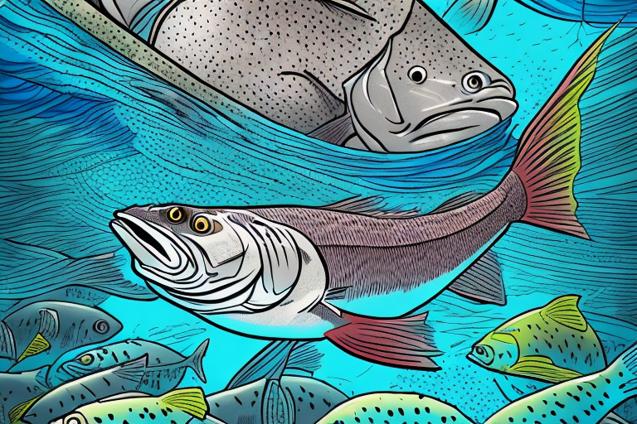
Discover the benefits of catch and release fishing as a sustainable and ethical approach to fishing while on your sailing adventure.
The Benefits of Catch and Release Fishing
As you embark on your sailing adventure with your family, one of the most rewarding and enjoyable hobbies you can take up is fishing. Fishing is not only a great way to bond with your loved ones, but it also provides a sustainable source of food while you’re out on the open sea. However, it’s important to consider the impact of your fishing activities on the marine ecosystem. One way to minimize your impact and promote sustainable fishing practices is through catch and release fishing. In this article, we’ll explore the benefits of catch and release fishing and provide some tips on how to do it effectively.
What is Catch and Release Fishing?
Catch and release fishing is a practice where anglers catch fish and then release them back into the water, usually unharmed. This method of fishing is often used as a conservation tool to help maintain healthy fish populations and protect the marine ecosystem. Catch and release fishing can be practiced in both freshwater and saltwater environments and is applicable to a wide variety of fish species.
Benefits of Catch and Release Fishing
There are several benefits to catch and release fishing, both for the angler and the environment. Here are some of the main advantages:
Conservation and Sustainability
One of the primary benefits of catch and release fishing is that it promotes conservation and sustainability. By releasing fish back into the water, you’re helping to maintain healthy fish populations and ensuring that future generations can enjoy the same fishing opportunities that you have. This is particularly important for species that are overfished or have slow reproduction rates.
Ethical Fishing
Catch and release fishing is often seen as a more ethical approach to fishing, as it minimizes the harm done to the fish and allows them to continue living in their natural habitat. This can be especially important for anglers who are passionate about the environment and want to ensure that their fishing activities have a minimal impact on the marine ecosystem.
Improved Fishing Skills
Practicing catch and release fishing can help you improve your fishing skills, as it requires a greater level of care and attention to detail. You’ll need to learn how to handle fish properly, use appropriate gear, and develop techniques for releasing fish safely. This can make you a more skilled and responsible angler overall.
Increased Challenge and Enjoyment
For many anglers, catch and release fishing adds an extra layer of challenge and enjoyment to their fishing experience. The focus shifts from simply catching as many fish as possible to catching fish in a responsible and sustainable manner. This can make your fishing trips more rewarding and fulfilling, as you know that you’re contributing to the health of the marine ecosystem.
Tips for Successful Catch and Release Fishing
To ensure that your catch and release fishing efforts are effective and minimize harm to the fish, it’s important to follow some best practices. Here are some tips to help you get started:
Use Appropriate Gear
Using the right gear is essential for successful catch and release fishing. Choose hooks that are easy to remove, such as circle hooks or barbless hooks. These types of hooks are less likely to cause injury to the fish and can be removed more quickly and easily. Additionally, use a rod and line that are appropriate for the size of the fish you’re targeting, as this will help you land the fish more quickly and reduce stress on the fish.
Minimize Handling
When practicing catch and release fishing, it’s important to minimize the amount of time you handle the fish. Excessive handling can cause injury and stress to the fish, which can reduce their chances of survival after release. Use a net to land the fish and keep them in the water as much as possible while removing the hook. If you must handle the fish, wet your hands first to minimize damage to their protective slime layer.
Proper Hook Removal
Removing the hook quickly and efficiently is crucial for the well-being of the fish. Use needle-nose pliers or a hook removal tool to gently remove the hook from the fish’s mouth. If the hook is deeply embedded or difficult to remove, it may be better to cut the line as close to the hook as possible and leave the hook in the fish. In many cases, the hook will eventually rust and fall out on its own.
Revive the Fish
Before releasing the fish, take a moment to revive it if necessary. Gently hold the fish in the water, facing into the current, and allow water to flow through its gills. This can help to oxygenate the fish and increase its chances of survival after release. Once the fish shows signs of recovery, such as swimming strongly or attempting to escape your grasp, release it back into the water.
Know the Regulations
Before you head out on your fishing adventure, make sure you’re familiar with the local fishing regulations. Some areas may have specific catch and release requirements, size limits, or restrictions on certain species. By following these regulations, you’ll be contributing to the overall health of the fishery and ensuring that it remains sustainable for future generations.
Conclusion
Catch and release fishing is an excellent way to enjoy the sport of fishing while minimizing your impact on the marine ecosystem. By practicing catch and release fishing, you can help to promote conservation, improve your fishing skills, and experience a greater sense of fulfillment and enjoyment on your sailing adventures. With the right gear, techniques, and knowledge of local regulations, you can become a responsible and sustainable angler, contributing to the health of our oceans and the future of fishing.